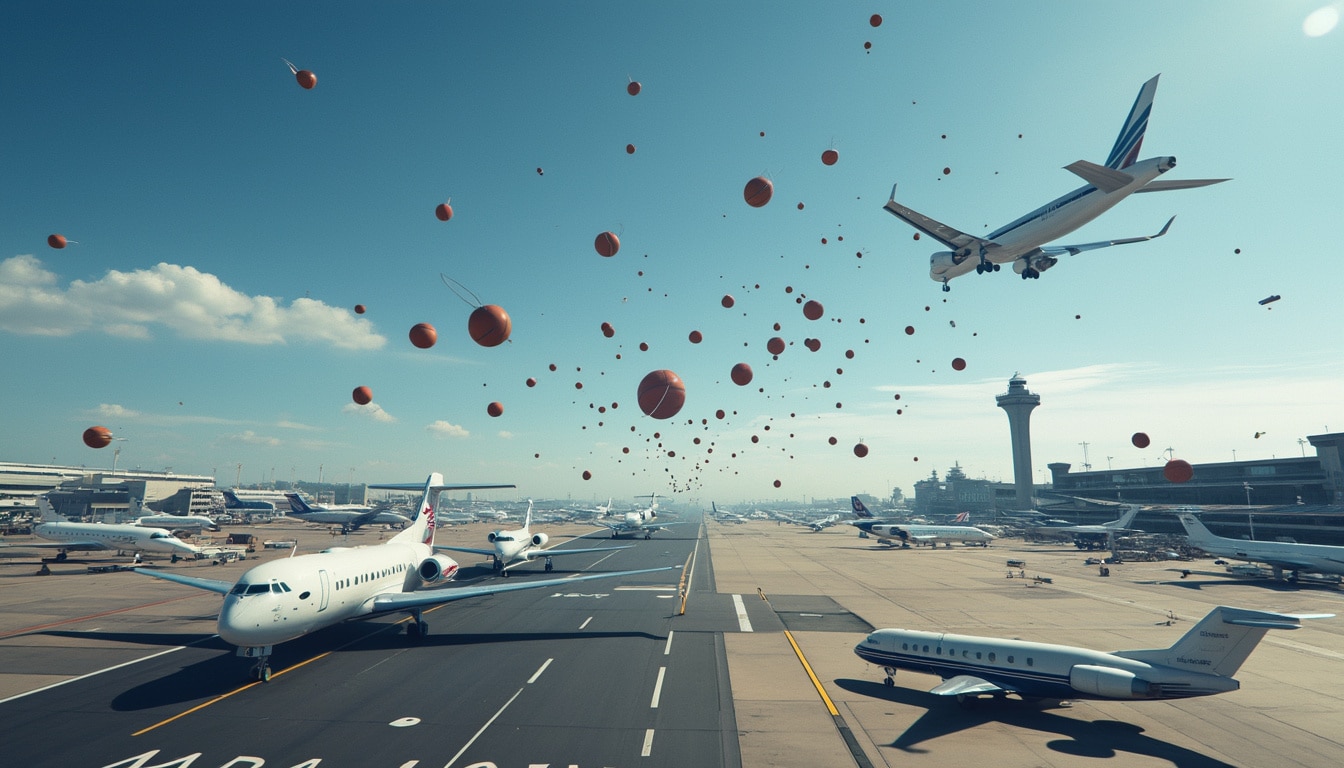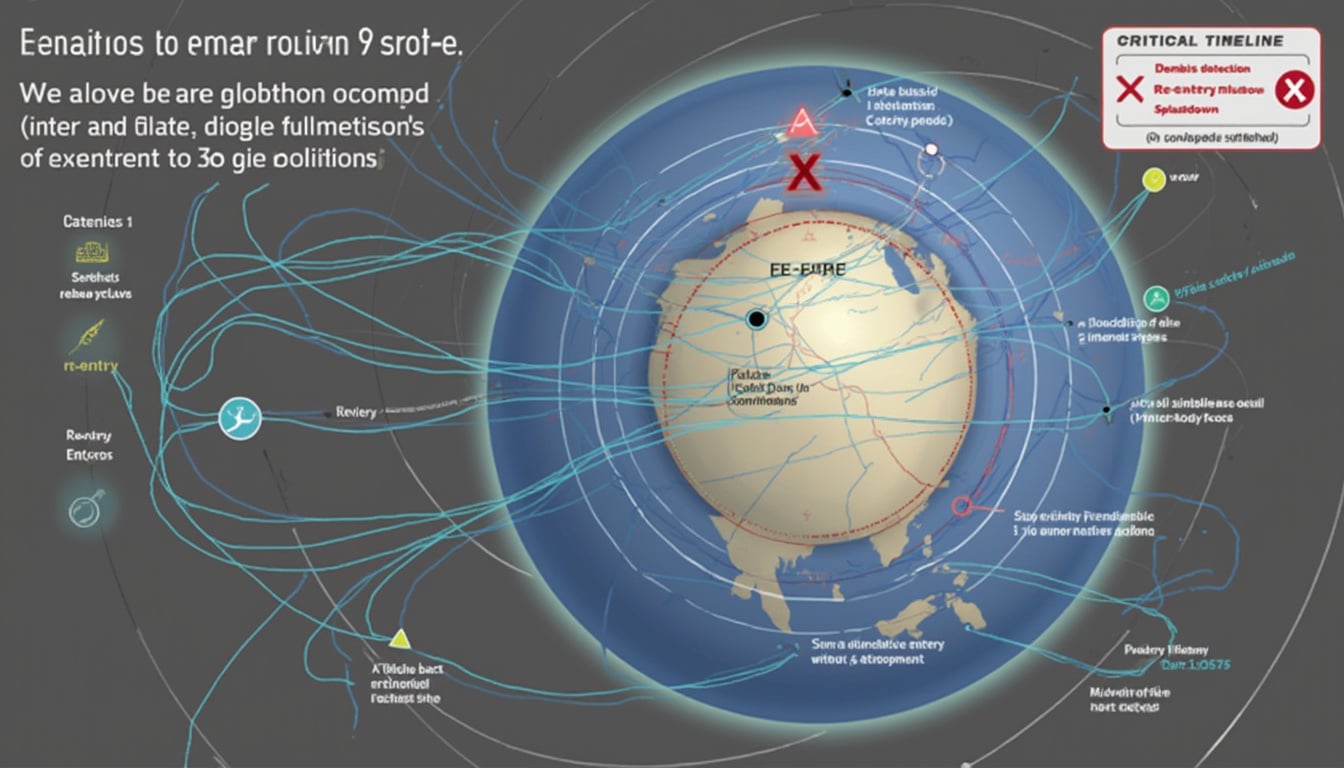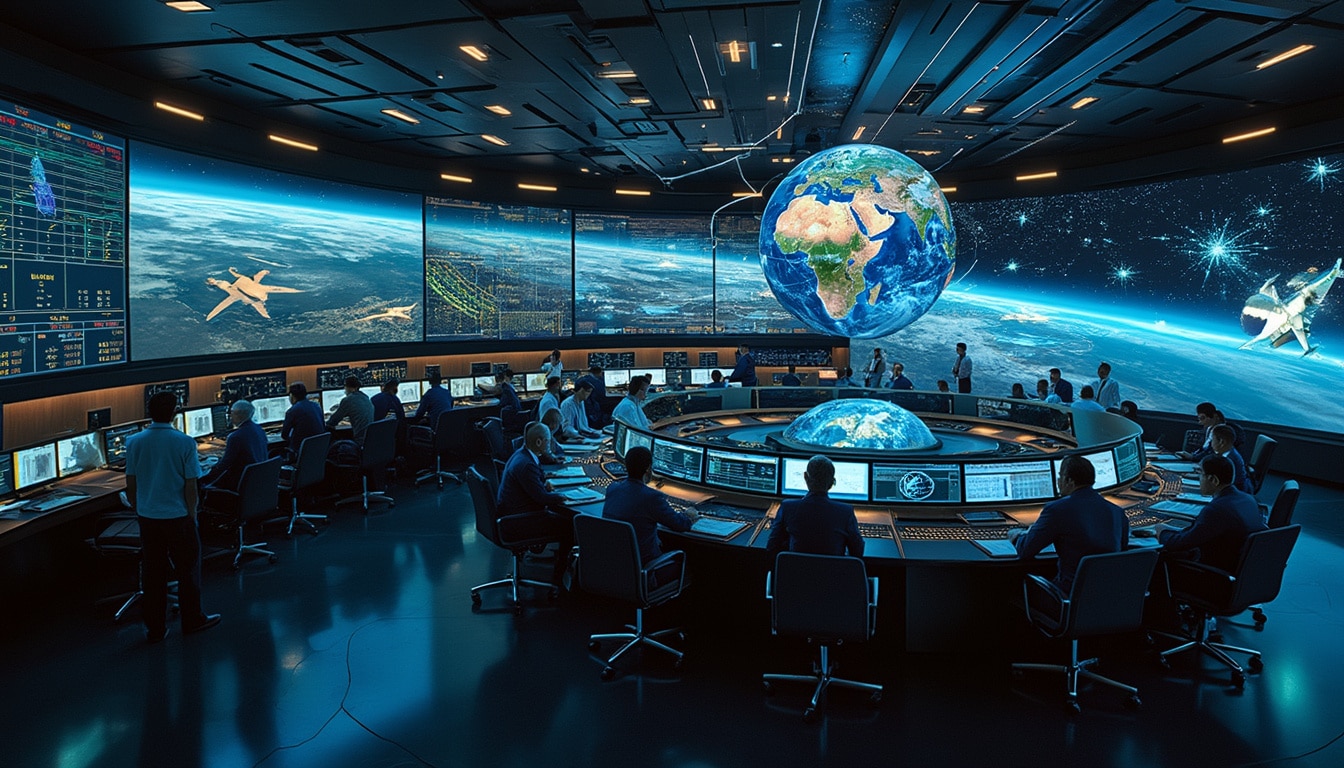The implications of recent space missions extend far beyond just scientific exploration. A startling study conducted by researchers from the University of British Columbia reveals a concerning trend regarding space debris, particularly the aftermath of a SpaceX rocket explosion. The data indicates a 26% annual probability that debris from space missions could intersect with busy air traffic routes. This statistic highlights the urgent need for the aerospace community to address these looming threats to aviation safety.
Data collected in 2024 showcased that amid 258 rocket launches, there were 120 uncontrolled re-entries, although no catastrophic aircraft collisions were recorded. Yet, experts warn that it’s only a matter of time before an incident occurs unless significant measures are taken. This revelation feels particularly pertinent considering the widely-publicized explosion of a SpaceX Starship shortly after its launch, which dropped debris across the skies of the Caribbean and caused temporary airspace closures. The subsequent need for aviation safety adjustments illustrates the intertwining fates of air travel and space exploration.
The Reality of Space Debris: How it Affects Aviation
The growth of the space industry has inadvertently led to an increase in space debris. Today, thousands of pieces of defunct satellites, spent rocket stages, and other fragments hover in Earth’s orbit, threatening both space missions and aircraft flying through the atmosphere. According to recent studies, the risk of rocket debris impacting an airplane is rising due to increasing flight rates and the frequency of uncontrolled re-entries.
Experts from the Aerospace Corporation estimate the likelihood of a plane colliding with falling space debris to be nearly 1 in 100,000. However, any piece of debris, regardless of its size, could have catastrophic consequences due to the relative velocities involved. The dynamic environment of commercial aviation now has to contend with these alarming risks, compelling the industry to adapt accordingly.
For instance, aviation safety protocols have recently been modified. Spain and France have taken precautionary measures in the past by closing airspace during re-entry events. While these measures are essential for ensuring passenger safety, they also lead to significant logistical issues for airlines and travelers.

Understanding Space Debris and Its Origins
Space debris originates from various human activities dating back to the early days of space exploration. Each launch risks creating more debris, whether intentionally released or accidentally generated during collisions or explosions. The growing trend of satellite launches significantly contributes to the accumulation of debris.
In 2023 alone, numerous launches, including those by SpaceX and several other private companies, added to the clutter in orbit. Studies show that an alarming percentage of space debris remains in lower Earth orbit where commercial flights operate. These risks amplify the potential for a future collision between aircraft and falling debris, potentially resulting in loss of life and significant damage, both in space and on the ground.
Researchers at UBC argue that more structured and careful planning is necessary to minimize space debris. The inefficiencies of the current space launch frameworks are apparent, leading to calls for new regulations that would prioritize safety across both airline and space travel industries. This requires a collaborative effort among private companies, governments, and international bodies.
Design Improvements and Control Measures
As space missions and satellite launches become more frequent, the need for better design in both spacecraft and rockets becomes evident. Currently, many space vehicles are built without adequate plans for deorbiting once their operational life is over. Uncontrolled reentries pose a tangible threat not only to airlines but to anyone in the path of falling debris.
Experts suggest that implementing controlled re-entries where space debris is directed to crash into the oceans or remote areas could mitigate risks significantly. Such engineered de-orbiting mechanisms would ensure the debris burns up before it could ever reach civilian areas or busy air routes.
However, the challenge lies in convincing all those involved in the space sector—nation-states and private enterprise alike—of the necessity of such measures. Significant advancements in tracking systems and defining standard practices for decommissioning rockets and satellites are crucial steps forward. The space community must reevaluate their current protocols to ensure long-term safety.

Current Safety Protocols in Aviation
To tackle the impending dangers from space debris, the aviation industry has steadily begun to integrate precautions into its operational procedures. Airlines are now constantly monitoring potential risks from falling debris, relying on real-time tracking technologies to stay informed about the latest data on space missions.
The Federal Aviation Administration (FAA) has rolled out multiple alerts advising pilots to maintain awareness of potential hazards linked with rocket re-entries. Tighter coordination amongst agencies including NASA, FAA, and various aviation bodies is necessary to address the overlaps of air traffic management and space operations efficiently. This comprehensive approach will enhance passenger safety while in flight.
Additionally, there is a growing discourse on the need for an international framework that comprehensively addresses space debris and its impact on aviation safety. Developing clear regulations, monitoring protocols, and emergency response plans would protect the integrity of both air and space travel.
Future Outlook: A Collaborative Approach is Essential
The path forward requires a concerted effort among the global community to address the challenges posed by space debris. As the odds of collision increase, collaboration between countries, engineering firms, and regulatory bodies is crucial in finding solutions.
At the heart of this collaborative endeavor lies the necessity for innovative engineering. The space industry must invest in research to develop technologies that enhance debris management, including improved tracking systems and controlled disposal techniques. The vision is to transition from a reactive stance to a more proactive approach in mitigating risk.
Governments are encouraged to come together, adopting stringent standards universally, ensuring that all entities launching into space are held accountable for their debris. Until a collective stance is taken, the risks posed by uncontrolled debris remain a matter of significant concern for aviation safety.

Public Awareness and Engagement
Amid these developments, public awareness about the risks associated with space debris is more crucial than ever. Enhanced understanding of space issues can lead to greater public discourse, potentially pushing government bodies to act on pressing safety concerns. Education should play a key role in informing travelers about these hazards. Informed passengers can advocate for safer practices in aviation and space exploration, reinforcing the demand for safety and accountability in the sectors.
Advocacy can take many forms—from online petitions to participation in public forums discussing safety and regulation. A more informed public is an empowered public, and with the stakeholders paying attention to these voices, changes may be more feasible.
The Intersection of Space Events and Aviation
Understanding the intersection of space events and aviation safety structures is key to managing risks effectively. Real-time data sharing between space agencies and aviation authorities seems vital in creating a comprehensive safety net. This would allow for timely alerts when danger arises from space debris.
Looking ahead, integrating advanced technology will also support safety measures. Initiatives to construct databases tracking both aircraft and space debris are on the rise. This could lead to predictive analytics that warn operators of potential close encounters, enhancing the decision-making wheel, ensuring a safe travel experience for passengers.
The relationship between aviation and astronomical research must advance beyond mere coexistence; it must actively work toward a safer future where falling space debris does not threaten any aircraft. By merging aviation and space expertise, both sectors can safeguard each other’s interests more effectively, securing the skies and space for future generations.

Embarking on a Safer Aviation Future
Ultimately, a proactive attitude is necessary for establishing safer skies today and for the future. Legislative measures must be driven by scientific data revealed through collaborative efforts. As the space age evolves, it comes with an undeniable responsibility to ensure that while harnessing the sky’s potential for exploration and travel, we do so mindfully and safely.
Aviation safety cannot merely adapt to the growing challenges posed by space debris; it must actively engage in preemptive measures that address these evolving risks. This comprises not only regulatory interventions but also engineering innovations that guarantee safety during both space endeavors and commercial flights.
While hope lingers that future launches will come with increased safety measures, the reality reveals that without concerted international efforts, the challenges ahead require urgent attention today. Such is the challenge of modern air travel intertwined with the exploration of outer space.




Leave a Reply